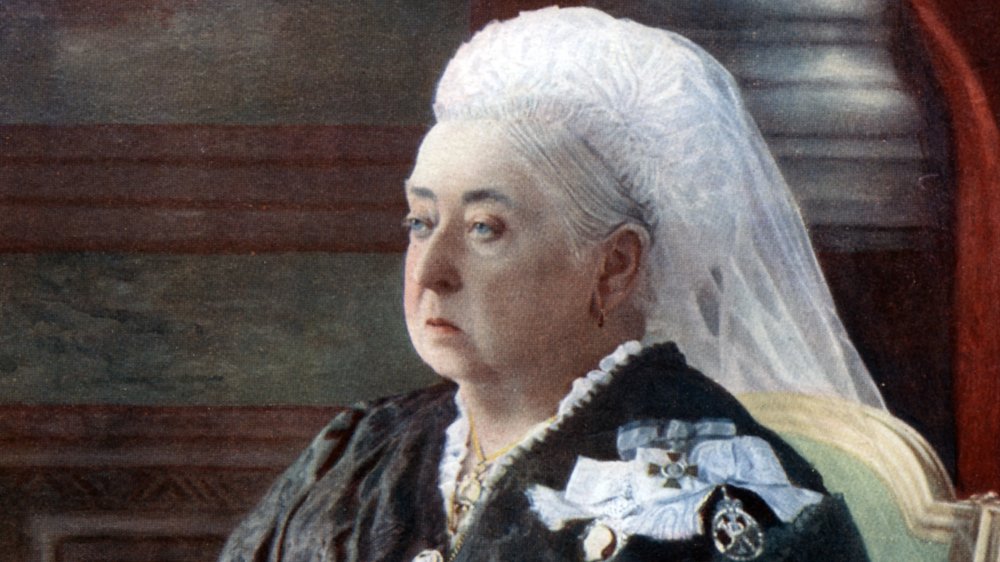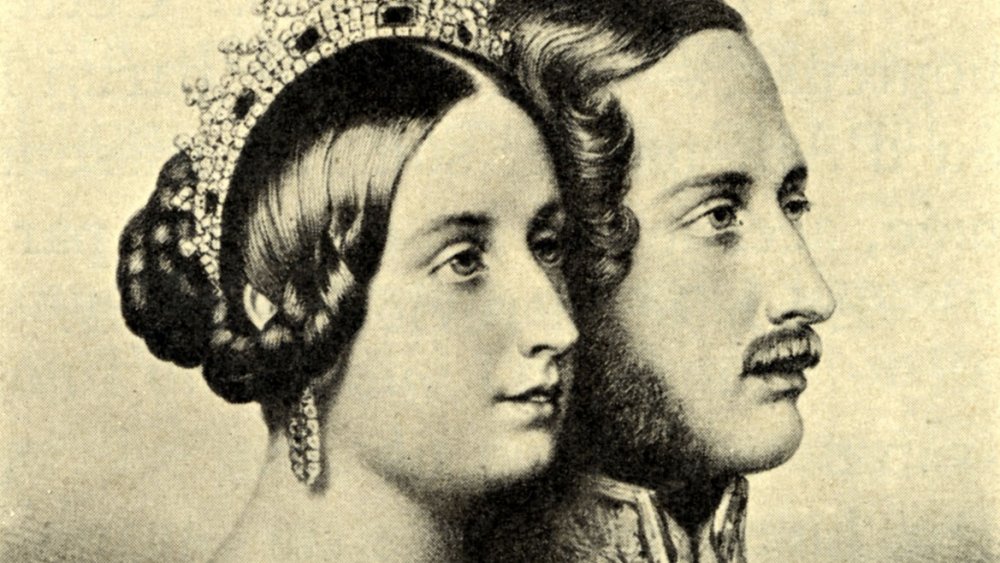The Real Reason Queen Victoria Wore Only Black
Rules is rules, right? Even for rulers. Whether we are amused or not, some things must be done. For instance, as Mel Brooks told us more than once, "It's good to be the king." (Or queen, depending.) There are downsides, of course — the occasional assassination attempt, even for somebody like Queen Victoria, a mere 18 when she ascended the throne of England. Arranged marriages that had far more to do with political alliances than, say, love, or even attraction. But then, every once in a while, in a plot twist straight out of a higher-budget Hallmark movie, the royals in question actually do fall in love. And Victoria did, with Prince Albert, the man who would become her husband.
They met when they were teenagers, and although there doesn't necessarily seem to have been an immediate romantic spark, she seems to have thought he was, well, cute, though of course she said it better, according to The History Press: Albert was "extremely handsome; his hair is about the same colour as mine; his eyes are large and blue, and he has a beautiful nose and a very sweet mouth with fine teeth; but the charm of his countenance is his expression, which is most delightful...."
By all accounts, they genuinely loved one another
Later, she proposed to him, says Encyclopedia Britannica, and they married when both were about 20. She wore a white wedding gown, establishing a tradition that is often continued today. And they remained married, apparently enjoying, respecting, and relying on one another, despite the pressures (and presumed temptations) that being royal might afford.
Albert composed music and wrote poetry for and about his wife, and designed jewelry for her. He was athletic, and credited with helping Victoria shape her conscience in regard to significant social issues of the day. They had nine children together, and by all accounts delighted in one another's company.
But then Albert became ill. As Biography relates, he battled stomach ailments for some time before he died, age 42, after 22 years of marriage. Victoria — his queen, his wife, his friend — never truly got over the loss. Though it was the custom in Britain in those days to wear black as a sign of mourning after the death of a relative or a monarch, usually that period lasted anywhere from a couple of months to perhaps two-and-a-half years, according to New York's Metropolitan Museum. Victoria fell into a deep depression, and though eventually recovered, she took display of mourning one step further, wearing black in public for the rest of her long life, until she died in 1901 at the age of 81 — 40 years after the death of her beloved Albert.

